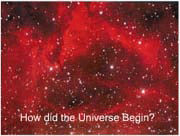It was a warm summer afternoon in the new U.S. Capitol Visitor Center and some European rabbis and imams were exchanging bearhugs. Imam Mohamed Kajjaj, vice president of the Council of Muslim Theologians of Belgium, waxed eloquent about all the Muslim-Jewish give and take. "It's been magnificent, wonderful," he said, speaking in French. "This is a grand movement for the future."
These Muslim and Jewish leaders had met for the first time only a few days earlier as part of an unusual effort by the New York-based Foundation for Ethnic Understanding (FFEU) to foster ties between two religions with a history of conflict and suspicion on modern times.
In July, the foundation flew more than two dozen of these religious leaders from Europe — where religions rarely communicate with one another — to the United States, where interfaith cooperation has been part of the religious landscape for hundreds of years. The FFEU, which spent $150,000 on the project, was banking on America's interfaith experiment being attractive enough as a model for other cultures.
"It's so good to see my friends on both sides of the religious aisle, if you will," he said. "The real world changers and leaders are in this room. You have influence over the hearts, minds and spiritual direction of most of the people on this earth."
Although the Australian government provided $4 million to help underwrite the 2009 gathering, the main funding for worldwide interfaith efforts still comes from the United States. Foundations that lend money to interfaith initiatives include the Henry Luce Foundation, the Ford Foundation, the Sierra Club, the Open Society Institute's Soros Foundations and the Bill & Melinda Gates Foundation.
One of the most well-known 20th-century interfaith efforts, the San Francisco-based United Religions Initiative (URI), has garnered support from many secular foundations and wealthy patrons since its founding 10 years ago. Its annual budget is $2.6 million, and it boasts 317,000 members in 72 countries who are committed to what it calls "transforming religious conflict into positive social change."
Lee Penn, a Roman Catholic writer and author of the 2004 book "False Dawn: The United Religions Initiative, Globalism, and the Quest for a One-World Religion," said the URI, whether or not it intends to, provides the basis for a coming global religion. "Under President George W. Bush and President Obama, American civil religion is now interfaith," encompassing what Mr. Obama in his inaugural address called a "patchwork heritage" of Christians and Muslims, Jews and Hindus, and nonbelievers, Mr. Penn said. "Officially, Christian America is no more."
"The interfaith movement is growing worldwide and the United Religions Initiative is one of its leading organizations. The URI, in time, aspires to have the visibility and stature of the United Nations. "In short, global governance and interfaith are now normal and accepted ideas for secular and religious leaders worldwide. The new world order is not science fiction; it is being built now. The question is not whether there will be a new world order; it is who will control it and for what ends."







